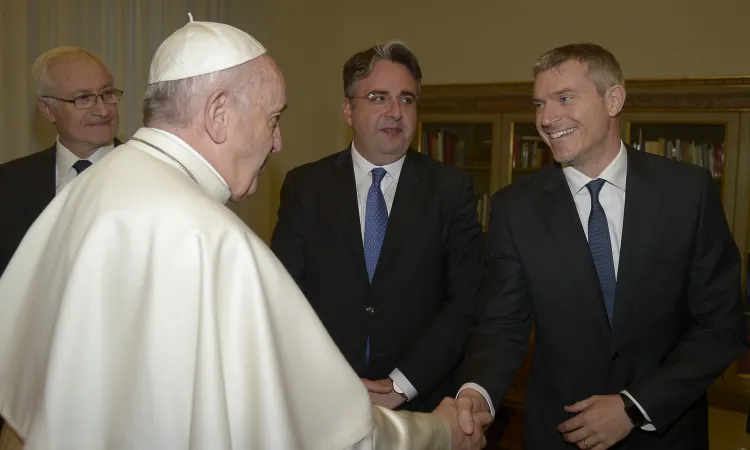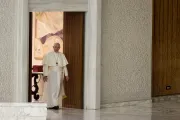The Holy See Press Office will stay as a direction, as the statutes say. Speaking with journalists, Gisotti said it is evident that a Papal trip will be announced by a declaration of the Holy See Press Office director, as it will be an official response to questions by journalists.
In an interview granted to Vatican News, Matteo Bruni, the new Holy See Press Office director, underscored the great work he did with journalists during the last years. He has been a sort of liaison between the Press Office and the journalists, especially for the organization of the Papal trip. It will not be possible to assimilate his job to that of a spokesperson, as it happened for Joaquin Navarro Valls, Fr. Federico Lombardi and Greg Burke.
Bruni is the first non-journalist of the modern era at the helm of the Holy See Press Office. He is called to coordinate and manage a Press Office that has a regulation finally. During his months of interim, Gisotti took charge to write a statute. Gisotti also promoted the new organizational chart: Romilda Ferrauto as senior advisor, Raul Cabrera Perez, and Sr. Bernadet Reis as assistants of the director, Thaddeus Jones as office manager.
The international team is intended to cover the most critical linguistic area and to fill some structural lacks. It is noteworthy that the group was composed of internal resources: all of the staff come from the Vatican Radio ranks. They know the machine and the Vatican mentality, but they also know how to relate with journalists.
More in A Vatican Observer
In the end, all the staff of the Dicastery for Communication was raised and nurtured within the Holy See, but the top officials: nor Paolo Ruffini, prefect of the Dicastery, nor Andrea Tornielli, editorial director, ever worked in the Vatican before, and neither did Andrea Monda, director of L'Osservatore Romano, who must be considered part of the team of Communication.
This new structure completes the path of the reform. This path began with the committee chaired by Lord Christopher Patten, went on with another commission and step by step made concrete with the establishment and shaping of the Dicastery.
The rationale of the reform was not just that of unifying all the media departments, but rather to create a real ministry that took care both of pastoral and news.
Next step of this reform will be the transfer of the L'Osservatore Romano offices outside of the Vatican Walls, in the same building where Vatican Radio / Vatican News office is. The transfer was planned long before. It is intended to have all the media office working together in the production of contents.
The transfer is also symbolic. It tells of a detachment of the Holy See communication from the Vatican City State. The detachment began with Paul VI decision to establish the Holy See Press Office outside of the Vatican Walls, moving it out of the rooms of L'Osservatore Romano.
Another clue of this detachment is the increasing marginalization of the Secretariat of State. The Holy See Press Office had always been under the Secretariat of State umbrella.
Vatican communication is, thus, institutional communication with an international perspective and firmly centered on the words and the image of the Pope. This communication is less self-referential when it communicates the Holy See activities. However, it risks being self-referential when it tells about Pope Francis and his gestures.
(Column continues below)
Subscribe to our daily newsletter
Indeed, the era of the Vatican spokesperson with direct access to the Pope or his entourage is over. The Holy See Press Office ceases to be the central reference point of Vatican communication. Perhaps, not even the editorial direction is the primary reference point. Probably, the only main reference point is now just the Pope.



